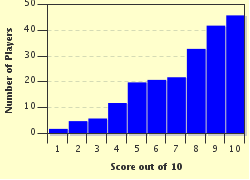Quiz Answer Key and Fun Facts
1. Even if the "key" elements are missing, one could immediately recognise this flag based upon the two colours. From which small nation is this the flag, if we add some designs?
2. Believe me or not, but I've started this drawing with the intention of recreating the Mexican flag. Alas, in order to distinguish it from the Italian flag, I need to add three of the following four elements in the white stripe. Which of the following does *NOT* belong on the Mexican flag?
3. I know I should add an armillary sphere and the national escutcheon, but I'm too clumsy to draw these off the cuff. Which country has this flag (if the missing elements are added)?
4. No, this flag is not ready to use yet. I started out with a white flag, hoping to finish the drawing into the flag of Cyprus. But I can't find the necessary tools to draw the country's outline, and I'm not good in drawing such complex shapes off the cuff. The country's outline is filled with which of the following colours?
5. The drawing I made for this question resembles the Austrian flag, doesn't it? But adding the tree I've left out, you'll surely recognise the flag of which country?
6. Since 1863 (except for a few short spells), the flag of Cambodia has always displayed which national symbol?
7. This flag is a diagonal bicolour, it seems. But I forgot two key elements. In the black triangle, I have to add five stars in the form of the Southern Cross. In the red triangle, I should add a Raggiana bird of paradise (in yellow tints, not in the original plumage). Which flag shows us the bird of paradise?
8. This blue and gold combination is the flag of Barbados. But one key element is missing. What kind of weaponry has to be depicted in the golden stripe?
9. This flag has to be completed with a yellow star (in the top stripe), a yellow machete (in the bottom stripe, but for the end that sticks out in the upper stripe) and part of a cog wheel (in both stripes), all depicted in yellow. Which country shows us the machete and the other aforesaid elements on a red-black background?
10. Red-white-red is a combination that occurs quite frequently in national flags. The missing key element which would make the illustration hereby to the national flag of Peru, is the Peruvian coat of arms: an escutcheon crowned by laurel, and containing three symbols. Which of the following is *NOT* one of the symbols on the Peruvian flag and coat of arms?
Source: Author
JanIQ
This quiz was reviewed by FunTrivia editor
stedman before going online.
Any errors found in FunTrivia content are routinely corrected through our feedback system.

